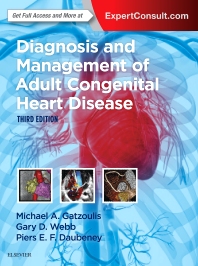Books in Cardiology and cardiovascular medicine
Books in Cardiology and cardiovascular medicine
- 1st Edition
- Volume 6-3
- June 14, 2017
- Srihari S. Naidu
- English

Interventional Heart Failure, An Issue of Interventional Cardiology Clinics
- 1st Edition
- Volume 9-2
- May 6, 2017
- Seshadri Balaji + 2 more
- English

Cardiac Arrhythmias in Adults with Congenital Heart Disease, An Issue of Cardiac Electrophysiology Clinics
- 1st Edition
- Volume 13-2
- March 11, 2017
- Daniel J. Lenihan + 1 more
- English

Cardio-oncology Related to Heart Failure, An Issue of Heart Failure Clinics
- 1st Edition
- Volume 6-2
- March 7, 2017
- Ehrin J. Armstrong
- English

Endovascular Treatment of Peripheral Artery Disease and Critical Limb Ischemia, An Issue of Interventional Cardiology Clinics
- 2nd Edition
- February 23, 2017
- Donald Oxorn + 1 more
- English

Intraoperative and Interventional Echocardiography
- 1st Edition
- February 23, 2017
- James de Lemos + 1 more
- English

Chronic Coronary Artery Disease
- 1st Edition
- February 23, 2017
- James de Lemos + 1 more
- English

Chronic Coronary Artery Disease
- 1st Edition
- February 21, 2017
- John M. Miller + 2 more
- English

Case Studies in Clinical Cardiac Electrophysiology
- 1st Edition
- Volume 9-1
- February 10, 2017
- Amin Al-Ahmad + 1 more
- English

Ventricular Tachycardia in Structural Heart Disease, An Issue of Cardiac Electrophysiology Clinics
- 3rd Edition
- February 2, 2017
- Michael A. Gatzoulis + 2 more
- English
